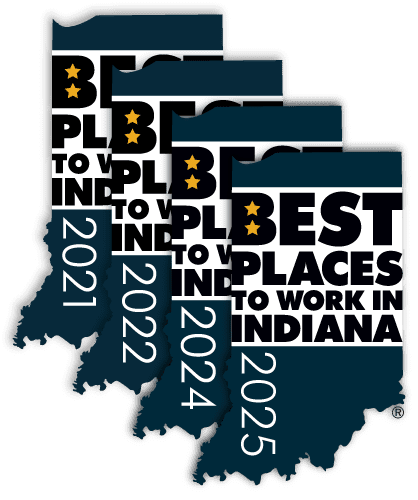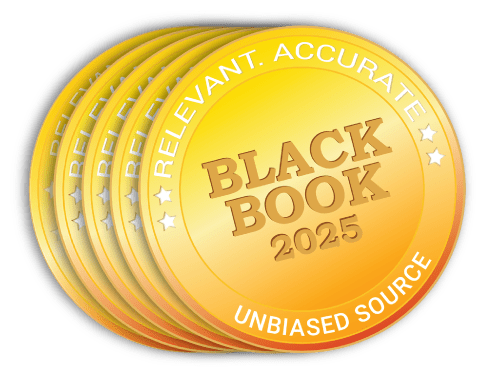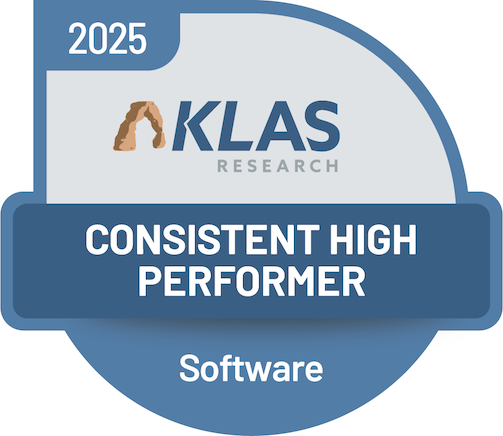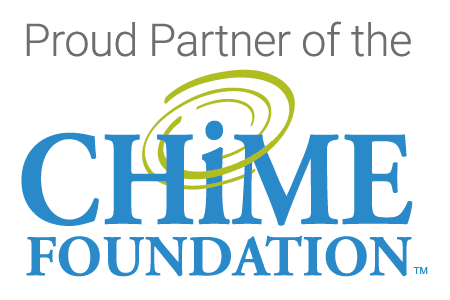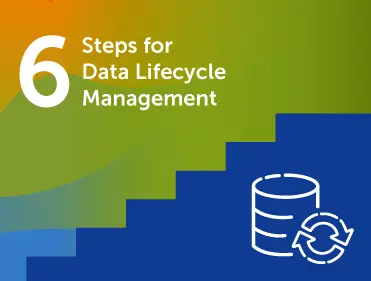
EHR replacements, new applications added from multiple mergers or acquisitions, increasing interoperability demands, security issues, cost containment pressures and regulatory compliance. Healthcare IT teams now face a complex environment and a digital transformation that has been decades in the making.
Data lifecycle management is not a one and done activity.
Consider that mergers and acquisitions (M&A) can double or triple the number of applications within a healthcare enterprise environment. This leaves hospitals with hundreds (or even thousands) of current and legacy software systems that store patient information, billing, administrative records and for the hospital business itself. With 6,093 hospitals in the U.S., that means there are millions of legacy software systems in play just at hospitals with data that needs a secure path forward. With data volumes tripling every three years and record retention rules spanning decades, a sustainable and evolving data lifecycle management plan is vital.
Data lifecycle management (DLM) refers to the comprehensive approach to managing data from creation to deletion.
The primary goal of DLM is to maximize the value of the data while ensuring the data is handled efficiently, securely and in compliance with regulations.
Healthcare DLM has five phases:
- Data Generation – Includes organizing data from inside and outside the organization as well as new data entry from clinicians and other staff members within the organization.
- Data Storage – As soon as there is new data, there needs to be a place for it to be securely stored, along with a backup and recovery plan.
- Data Sharing and Usage – Following organizational compliance plans, the data should be equipped for use and sharing (interoperability) inside and outside the organization and with patients.
- Data Archival – Any time there is a need to convert data from one system to another, there is the question of what to do with the data that is left behind and must be kept for years to come to meet retention requirements. Data that is not stored in the production applications but is needed for clinical care and compliance with record retention rules should be stored in an archive. With an integrated active archive, the data can be retrieved with a Single Sign-On from the active EHR.
- Data Deletion – When data is no longer needed, it can be destroyed following the organization’s data destruction policies in accordance with HIPAA regulations.
Why is data lifecycle management important?
There are many reasons to get a handle on data lifecycle management. Managing costs, improving security posture, streamlining the number of applications in operation and creating more efficient workflows are some of the most pressing concerns.
Cost containment is an ongoing pressure point for healthcare providers of all sizes. Annual support costs for legacy applications alone can run as high as 57 percent of the IT budget. The other major concern is security. Legacy software ranks as a leading entry point for cyberattacks.
What steps can providers take to establish (or uplevel) a sustainable data lifecycle management program?
We have identified six steps to help guide your next steps in creating or refreshing your data lifecycle management approach.
- Involve the Governance Team – Ensure you have a cross-functional group that works together regularly to develop (and update) a solid strategy, policies and plans to serve the organization. Governance teams should represent compliance, legal, business operations and technical teams. There also should be C-suite and senior management included as part of a Data Governance Council to help set overall direction and policies. Check out our guidance for the seven steps to implement strong data governance for legacy data.
- Update the Inventory – It is imperative to know what applications exist including details about their database size, server location, maintenance cost, date of retirement, etc. This tool can help. There also may be expanded inventory requirements from the newly proposed updates to the HIPAA Security Rule.
- Revisit the Legacy Data Management Strategy – This involves application rationalization and prioritizing the decommissioning of outdated legacy applications. It may also involve making changes to the type of long-term storage option for certain data types.
- Review Storage Options – More than 7 out of 10 CIOs from the College of Healthcare Information Management Executives (CHIME) reported their organizations have a data archive in place. That same number reported they have data archiving projects on their to-do lists. About 76 percent of hospitals and health systems have legacy software footprints that make up one-fifth (20 percent) of their technology assets. There are options for long-term data storage that primarily are based on how often and why the legacy data will need to be accessed. This includes:
- Active Archiving is for data that the organization needs on a regular basis. The active archive offers numerous features and equips users with an easy-to-use interface, workflows, view/print/fax capabilities and Single Sign-On from the go-forward EHR, along with interoperability options. Active archiving is available for clinical, financial and operational records.
- Warm Storage is ideal for securely storing business-critical data that needs occasional access, with a limited interface for basic actions like file upload, download, and delete, with metadata tagging and retention rules for organization.
- Cold Data Storage works best for the compliant, long-term storage of raw source data that is not expected to be accessed and doesn’t require a user interface. It minimizes storage costs while allowing a technical resource to receive access to data if needed.
- Prepare for Future Access and Release of Information. Health IT solutions need to continually evolve to gather, store and share more information. Streamlining the application portfolio is an ongoing process that will help organizations stay nimble and equipped to securely store and release the data while employing the most efficient solutions.
- Integrate for Interoperability. Setting up the organization’s health IT for interoperability success involves a commitment to working with solutions that can integrate and deliver. The ONC defines four areas of EMR technology that play a vital role in creating an interoperable health IT environment.
Special Consideration: Include A/R and business applications in data lifecycle management planning.
While clinical EHR data may be the headline for a strong long-term data management program, it is not the whole story. It is important to take stock of the entire IT portfolio and look beyond the clinical EHRs within your organization. There can be financial, business and other operational data housed in a variety of applications that need a secure, long-term plan.
For example, data archiving is a strong solution to manage legacy accounts receivable applications. HealthData AR Manager® provides comprehensive management of collections for legacy A/R Records Wind Down. This helps reduce the cost of legacy system support, ensures record retention and compliance, enables account resolution during system transition and helps fortify the organization’s defense against cybersecurity threats as legacy applications can be decommissioned.
The six benefits of a solid data lifecycle management program
Implementing best practices for sustainable and forward-thinking, long-term data management offers business value in many areas of the operation. This includes:
- Consolidated data. A primary benefit of a robust data management program is efficient data organization that contributes to improved patient care.
- Improved security posture. Legacy and unsupported software ranks a bad practice according to the Cybersecurity and Infrastructure Security Agency (CISA). A streamlined application portfolio and consolidated data storage reduces risk to ePHI and the organization. Here are a few security questions to ask any future archiving partner.
- Cost savings. In a survey of CIOs, 58 percent reported decommissioning legacy applications provides cost savings. In most cases ROI from moving legacy financial, clinical and business applications is achieved within 18-24 months.
- Having a solid legacy data management program in place supports compliance with HIPAA, the 21st Century Cures Act and other compliance requirements.
- Improved workflows. With HealthData Archiver® accessible with Single Sign-On from the active EHR, workflows are improved. A new Legacy Record Indicator signals if there are historical records within the archive to further improve efficiency.
- Better data quality and utilization. Industry studies show that organizations with strong data governance frameworks report 20-40 percent higher data quality and 30-50 percent better data utilization.
Harmony Healthcare IT supports healthcare providers of all shapes and sizes with solid, sustainable data lifecycle management solutions.
Our HealthData Platform™ offers secure solutions for the management of protected health information with storage, workflows, transactions and interoperability capabilities. Our team offers deep and broad experience with more than 700 unique software applications.
Wherever you are on your lifecycle data management journey, we can help.

